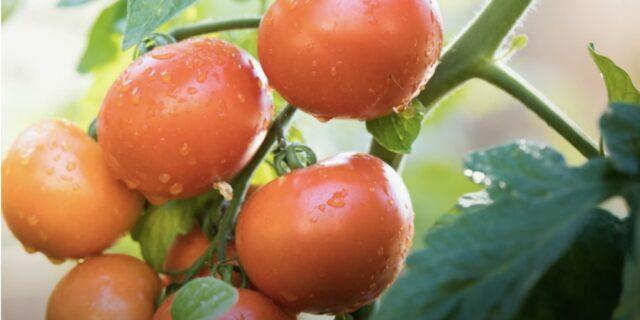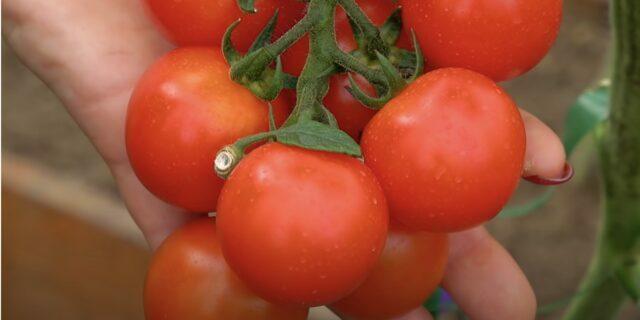When to plant tomatoes for seedlings and how to do it
Miscellaneous / / April 02, 2023
We understand all the intricacies - from the choice of seeds to the timing of the transfer of tomatoes to the beds.
When to plant tomatoes for seedlings
The optimal sowing time for all types of tomatoes in the middle lane is from mid-February to mid-March. In the southern regions, due to the earlier arrival of spring heat, you can start preparing seedlings in February. But the inhabitants of the northern strip should not rush: sow tomatoes no earlier than the beginning of spring.
And you can also focus on the variety of tomatoes. Late-ripening crops are harvested after 125-140 days from the moment of germination, mid-ripening - after 110-120 days. Therefore, it is better to plant these two types early - just from mid-February to March 10-15. Early and ultra-early tomatoes ripen faster - 80-100 days after sprouts appear. They can be sown on seedlings until the beginning of April. Therefore, carefully read the information on the package with seeds: the manufacturer usually indicates the ripening time and the recommended sowing time for each variety.
How to choose tomato seeds
The fruits of tomatoes have a very different shape - from the classic round to elongated finger-shaped. They can be dyed in various shades of red, pink, burgundy, orange, yellow and green. The size also varies: from miniature cherry tomatoes to large fruits weighing up to a kilogram. All these characteristics are usually indicated on the package with seeds.

1 / 0
Red round tomatoes. Frame: Garden and Garden / YouTube

2 / 0
Elongated red tomatoes. Frame: Poleznoe TV / YouTube

3 / 0
Yellow Tomatoes. Frame: Natalia. Village life of a former townswoman / YouTube

4 / 0
Orange tomatoes. Frame: Tatyana gardener / YouTube

5 / 0
Chocolate colored tomatoes. Frame: Semyon Partner / YouTube

6 / 0
Large-fruited tomatoes. Frame: Semyon Partner / YouTube

7 / 0
Cherry tomatoes. Frame: Harvest garden / YouTube

8 / 0
Elongated cherry tomatoes. Frame: Harvest garden / YouTube
In addition to varieties, tomato hybrids are increasingly common, which are labeled F1 next to the name. As a rule, they give more yield and are resistant to diseases and pests. True, unlike varietal, from hybrid tomatoes it is impossible collect seeds. Also, think in advance where you are going to grow tomatoes: there are universal varieties and hybrids, and there are those that are suitable only for open ground or only for a greenhouse.
Another important nuance is the growth characteristics of the bush. Determinate tomatoes form a compact plant - up to 60-180 cm in height. They stop developing after 4-6 flower clusters and are well suited for growing in small areas. Slightly less common are superdeterminant tomatoes, which stop growing after the formation of 2-3 brushes.
Indeterminate tomatoes do not stop growing in height throughout the season. They form an unlimited number of brushes, which allows you to count on a bountiful harvest. True, in order to get more fruits, plants need to be regularly and in a timely manner. pinch - remove side shoots. These varieties are best grown in tall greenhouses.
Often, on bags of seeds, they write what this or that variety and hybrid will be good for. For example, some tomatoes are larger and fleshier and are good for making juice and sauces. For fruits conservation thick skin and compact size. Salad specimens are usually larger and juicier than the rest and will please you with a thin skin and sweet pulp.
How to plant tomatoes for seedlings
Tomato seeds have good germination, so they do not need to be pre-soaked and germinated.
Prepare containers for seedlings
Pots or plastic cups with a height of at least 15 cm and a volume of at least 200 ml are suitable for growing tomatoes. If there are no drainage holes in the bottom, make them with an awl or a blowtorch. They are needed so that excess moisture does not stagnate in the containers and the roots do not rot.
Suitable for sowing universal soil for growing vegetable seedlings or special soil for tomatoes, peppers and eggplant. Try to choose soil with an acidity level between 5.5 and 6.0 pH. Fill the cups with soil a little more than half.
Sow the tomatoes
Place a tomato seed on the surface of the soil in the center of the cup, for this it is convenient to use tweezers. Lightly press the seeds into the soil.
Pour more soil on top with a layer of about 0.5 cm. Moisten the crops with water from a syringe, douche or spray bottle. Do not forget to write the name of the variety or hybrid on the containers so as not to get confused.
Cover the cups with cling film or a transparent bag to create a greenhouse environment. Put them in a warm place with a temperature of 25-27 ° C.
Wait for shoots
They will appear in about 5-7 days. As soon as you see that the seeds have hatched, remove the cover from the cups and place the seedlings on a light windowsill. It is important that the tomatoes have enough light, otherwise the seedlings may stretch. If the daylight hours last less than 10 hours, put the tomatoes under phytolamps or ordinary fluorescent with a power of at least 36 W per 1 m². Leave them on for 10-12 hours a day. The temperature in the room with tomato seedlings should be between 18-22 ° C.
How to care for tomato seedlings
Tomatoes are quite unpretentious and hardy, so taking care of them will not take much time.
Water the tomatoes
Until the seedlings have their first true leaves, moisten the ground with a spray bottle, syringe or syringe, being careful not to get on the sprout. Watering tomatoes should be moderate, as the soil dries up, otherwise the seedlings may rot. When the tomatoes begin to grow, it is enough to water them once every 3-4 days so that the soil becomes moist over the entire height of the cup. If the air in the room is too dry, you can additionally spray the plants with water every day.
Add soil to cups
When the tomatoes release two pairs of true leaves, pour the soil into the cup, not reaching the edge of about 1 cm.
Further, this procedure can be repeated as needed, since in the process of growing tomatoes, the soil in the cups may settle. In a fresh layer of earth, the stem will begin to produce new roots, which will help to get stronger seedlings.
Feed Your Tomatoes
Plants need three top dressing. It is better to spend them in the evening, and then turn off the fitolamps so that the fertilizers that fall on the leaves of the plants do not burn them. Try to pour nutrient solutions strictly under the root.
- The first feeding should be carried out when the tomatoes release a couple of true leaves. This will happen about 2-3 weeks after germination. Dissolve 1 tablespoon of urea in 1 liter of water and water the plants under the root. You can also make other mixtures. In 1 liter of water, dilute 2 g of double superphosphate, 0.5 g of urea and 0.5 g of potassium salt and feed the seedlings.
- Fertilize again after 10-12 days. To do this, dilute 15 g in 1 liter of water or 50 ml of sodium humate in 1 liter of water and water the plants.
- For the third time, fertilizers are used about a week before the intended planting of tomatoes in the ground. Dissolve 1 tablespoon of nitrophoska in 10 liters of water and feed the sprouts.
When to plant tomato seedlings in a greenhouse and open ground
The optimal age of seedlings for "moving" to the site is about 2 months. Wait until the soil in the garden warms up to 10 degrees and the threat of return frosts has passed. In the south, suitable conditions develop already in mid-April, in the regions of the middle zone - not earlier than mid-May, and in the north - in early June.
At the same time, in greenhouse you can plant tomatoes early if the soil in it is warm enough. In the south - with the advent of April, in the middle lane - in early May, in the north - from mid-May.
Read also🌱🌱🌱
- When to plant eggplant seedlings and how to do it right
- When and how to dive seedlings of peppers, tomatoes, eggplant and cabbage
- When to plant snapdragon for seedlings and how to do it right
- When to plant celery for seedlings and how to do it correctly
- 12 ways to make a DIY seedling rack

